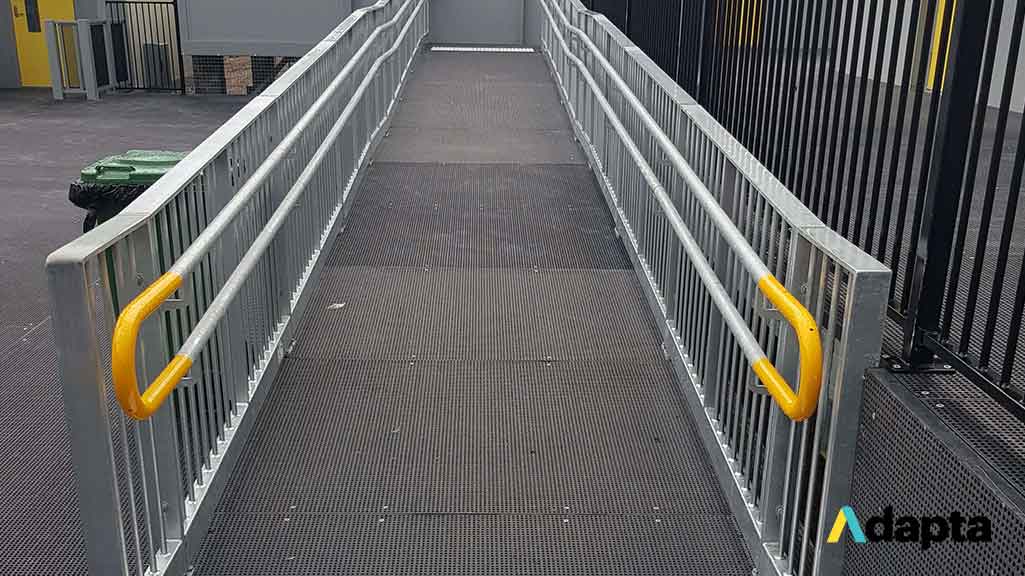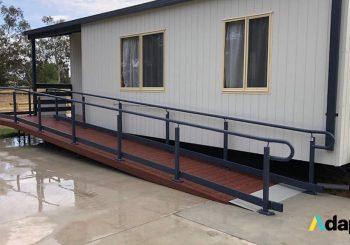Access ramps are engineered to allow people to easily access certain areas such as doorways, kerbs, and stairs. They act as bridges to access elevated surfaces. For individuals with mobility problems and require the use of electric scooters and wheelchairs, access ramps allow them to enter certain areas in a hassle-free and safe manner.
Having an access ramp is very advantageous for business establishments due to the number of benefits it offers to both customers and employees. If you’re looking to install an access ramp to your shop or office, below are some of the important factors you have to consider when it comes to choosing one.
Who Will Use The Access Ramp?
The first thing that you need to consider when it comes to selecting the right type of ramp for your business is the people who will be using it. For example, do you need to have an access ramp for customers or for delivery personnel? Will the access ramp be used for cargo carts, wheelchairs, or mobility scooters?
Identifying these factors can give you a clear idea of the type of ramp that you’ll need for your business. After all, these factors will determine the size, weight capacity, and overall design of the ramp. For instance, most ramps have a weight capacity of about 150 kilograms. On the other hand, bariatric ramps are designed to support a weight of up to 400 kilograms.
If the access ramp will be primarily used by senior citizens in wheelchairs and individuals with disabilities, then you’ll want to add a variety of safety features to the ramp, such as handrails, surface drain holes, and traction pads. These add-ons will help ensure that your customers will be able to safely access your place of business.
Where Will the Ramp be Placed?
After identifying the ramp’s primary user, the next thing you need to consider is the location where it will be installed. Similar to the topic discussed above, this factor will also determine certain features of your access ramp. For instance, an outdoor ramp will be exposed to the elements. This means it has to be made of durable materials that can endure different weather conditions.
Ramps can be made of concrete, steel, aluminium, or wood. Although you can choose the materials according to your preferences, it is highly advisable to select ramps that are made from galvanized steel if your business establishment is located in an area that regularly experiences heavy rain or snowfall.
In addition, the size and gradient you’ll need for your ramp will depend on its location. For wheelchair ramps that are designed to cross over a certain number of steps, you’ll need to make sure that it’s not too steep. It also should be wide and long enough to make it easier for wheelchair and scooter users to navigate across.
In Australia, there are various regulations related to the size and features of an access ramp for public spaces such as business establishments. Depending on the purpose and location of the ramp, its length, width, gradient, and other features should meet certain specifications for user ease-of-use as well as legal standards.
For example, according to the Australian Network On Disability, access ramps that are over 1,900 millimetres long should have a maximum slope of 1:14. The ramps should also have kerb rails on both sides to prevent the wheels of wheelchairs from hitting the support shaft of the handrails.
It’s also important to check the details of the Disability Discrimination Act to learn more about the proper layout of an access ramp. After all, this law was established to ensure that people with disabilities can properly access public places such as parks, government offices, and commercial establishments.
One of the guidelines of this law states that the distance between the handrails of access ramps should be about a meter wide. This requirement helps ensure that a mobility aid, such as a wheelchair, can easily pass through a ramp.
Do You Need A Portable Or A Permanent Ramp?
Another factor that you need to consider is if the ramp will serve as a permanent installation to your business establishment. Fixed or permanent ramps are usually built outside buildings. They are designed to navigate across various structural features such as doorways, sidewalks, steps, and other uneven outdoor surfaces. In most cases, permanent ramp installations are equipped with handrails and other safety features.
Portable ramps, on the other hand, are commonly used for areas that have raised doorways and small height differences. Usually, these ramps can be folded for easy storage. They can also be customized according to the user’s needs.
Aside from these folding ramps, you can also go for modular ones. Although these ramps aren’t as portable as the folding ones, they are still very versatile and can accommodate a variety of spaces through their adjustable legs and modular platform system.



